An examination of songs in the key of M.D.
By Luke Sacher
Everyone, at some point in their lives, needs a note from the doctor. So don’t doctors deserve a note or two? During the Rock n Roll age, writing pop tunes about healthcare professionals hasn’t always been a prescription for success, but every so often the result is solid gold. The all-time Top 10 includes songs by legendary groups like the Rolling Stones and Ramones—and individual stars such as Jackson Browne and Robert Palmer—as well as throw-away novelty hits that have managed to stand the test of time. If you’re feeling the end-of-winter blues, here’s my prescription for a little fun…
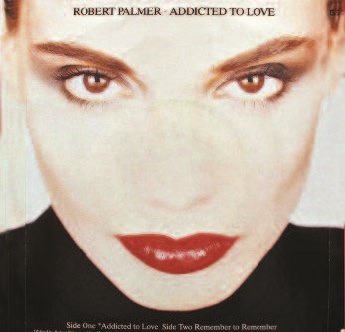 ADDICTED TO LOVE
ADDICTED TO LOVE
ROBERT PALMER
Palmer’s signature song won the 1986 Grammy Award for Best Male Rock Vocal Performance and also was nominated for Song of the Year. It entered the Billboard Hot 100 in February 1986, hitting #1 after 13 weeks and was #10 overall for that year. It also hit #1 in Australia and #5 in the UK. “Addicted to Love” was one of the last 45 RPM singles to receive a million-selling Gold certification.
Palmer, who died of a heart attack in 2003 at age 54, said that he wrote the song about his own addictive personality. Originally, he intended it to be a duet with Chaka Khan, but Palmer had to cut the track without her when her record company (Warner Brothers) would not grant her a release to work on his label (Island Records). The anchoring guitar chords for the song came to him in a dream: “That noisy riff woke me up. I went downstairs, got out the tape recorder, then went back to bed. Next morning, I thought, Phew, caught one there!”
The iconic music video for the song, directed by British photographer Terence Donovan, featured Palmer performing with a “band” of top female fashion models. Their visual style—pale skin, heavy makeup, dark hair, and seductively detached expressions—was derived from the paintings of Southern California pop artist Patrick Nagel. They were cast precisely because they had no musical training. As a result, each was keeping her own time and moving to a different beat. Palmer and Donovan reprised the visual concept for his videos for three other songs, including “Simply Irresistible.”
 COMFORTABLY NUMB (THE DOCTOR)
COMFORTABLY NUMB (THE DOCTOR)
PINK FLOYD
First released on the band’s 1979 album The Wall, “Comfortably Numb” was one of only three songs on the album co-written by guitarist David Gilmour and bassist Roger Waters. They were at loggerheads while working on it. “We argued over ‘Comfortably Numb’ like mad,” Gilmour later said. “Really had a big fight, went on for ages.”
They finally agreed to use Waters’s preferred opening and Gilmour’s second solo in the final mix. The lyrics are a counterpoint between the remarks of a doctor treating embittered rock star Pink (verses sung by Waters) and Pink’s inner monologue (chorus sung by Gilmour). The inspiration for Waters’s lyrics stemmed from a personal experience during the band’s 1977 In the Flesh tour: “I had stomach cramps so bad that I thought I wasn’t able to go on. A doctor backstage gave me a shot of something that I swear to God would have killed…an elephant. I did the whole show hardly able to raise my hand above my knee…That was the longest two hours of my life.”
When the band came out for an encore, Waters was unable to join them.
“Comfortably Numb” was ranked #5 on BBC Radio’s Desert Island Discs list and is lauded for its two virtuoso guitar solos. It also claims the distinction of having been the last song ever to be performed together by the original band members (Roger Waters, David Gilmour, Richard Wright and Nick Mason), in 2005.
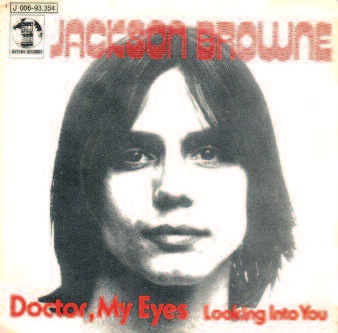 DOCTOR MY EYES
DOCTOR MY EYES
JACKSON BROWNE
“Doctor My Eyes” was the first single from Browne’s 1972 debut album and was a surprise hit for Geffen Records, reaching #8 on the Billboard Hot 100. The lyrics are essentially the reflections of a young man explaining to his psychotherapist how he had managed to endure the slings and arrows of life by steeling himself with stoicism—only to discover that it had rendered him isolated, emotionally bereft, and despondent. At the suggestion of David Geffen, Browne reworked what was composed as a slow ballad by upping the tempo, adding conga drums, background vocals and a catchy guitar solo—and turning the lyrics’ message of suicidal despair into resigned acceptance.
Browne’s good friends David Crosby and Graham Nash sang harmony vocals. Geffen asked Nash if he thought there was a single on the album, and Nash picked this one, while also recommending that Browne write a high vocal harmony into the chorus. There was originally a third verse to the song, which can be found on rare bootlegs
of the original demo recording. The late Glenn Frey of The Eagles said that he learned how to write songs when he and Browne were neighbors in Echo Park, by listening to him working on the opening piano riff over and over until he got it exactly right. Frey said to him, “So that’s how you do it. Elbow grease.”
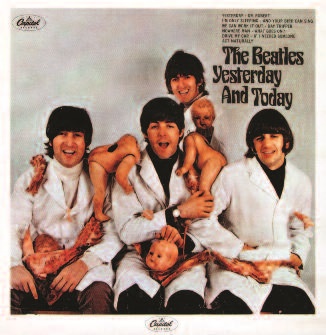 DR. ROBERT
DR. ROBERT
THE BEATLES
Everyone knows today that The Beatles experimented with drugs and wrote songs about their experiences under their influence, including “Lucy in the Sky with Diamonds” and “Magical Mystery Tour.” Was their very first “Dr. Robert,” which was written in 1966 and released in the U.S. on their Yesterday and Today album? In Paul McCartney’s book Many Years From Now, coauthor Barry Miles revealed that the name was based on Dr. Robert Freymann, whose East 78th Street clinic was “conveniently located for Jackie Kennedy and other wealthy Upper East Siders from Fifth Avenue and Park to stroll over for their vitamin B-12 shots, which also happened to contain a massive dose of amphetamine. Dr. Robert’s reputation spread, and it was not long before visiting Americans told John and Paul about him.”
I was six years old in 1966. Growing up on East 81st Street in Manhattan, I thought that it was a song about my Park Avenue pediatrician. I’m pretty certain that my parents knew exactly who Dr. Robert actually was, since he lived only three blocks away. Robert Freymann practiced in New York for almost two decades, administering massive doses of legal amphetamines to silk-stocking district and celebrity clients. He was finally expelled from the New York State Medical Society in 1975 for malpractice.
“We’d hear people say, ‘You can get anything off him, any pills you want,’” McCartney said. “It was a big racket. The song was a joke about this fellow who cured everyone of everything with all these pills and tranquilizers. He just kept New York high. John and I thought it was a funny idea: the fantasy doctor who would fix you up by giving you drugs, it was a parody on that idea.”
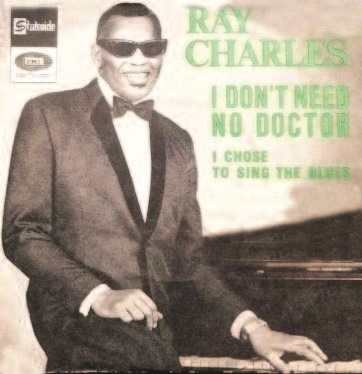 I DON’T NEED NO DOCTOR
I DON’T NEED NO DOCTOR
NICK ASHFORD, VALERIE SIMPSON, JO ARMSTEAD
Written by the legendary Motown husband-and-wife songwriting and performing team of Ashford & Simpson —in partnership with the equally marvelous “Joshie” Armstead—“I Don’t Need No Doctor” is considered one of the quintessential R&B tunes of the 1960s. It actually draws on elements of Gospel, Soul and Rock, which, over the years, has made it one of the most-recorded “doctor songs” in history.
Ashford & Simpson penned iconic hits including “Ain’t no Mountain High Enough” and “Ain’t Nothing Like the Real Thing,” while Armstead started her career as creator and lead singer of Ike and Tina Turner’s Ikettes, in 1961. “I Don’t Need No Doctor” was first recorded by Ray Charles and his orchestra in 1966. The 1971 version by Humble Pie still gets plenty of requests on oldies stations.
The tune has been covered by artists of all genres, from heavy metal to jazz, including: The Chocolate Watchband (1969), The New Riders of The Purple Sage (1972), W.A.S.P. (1986), Great White (1987), The Nomads (1989), Roseanna Vitro (1997), Beth Hart (2004), Styx (2005), Dr. Sin (2005), John Scofield (2005), John Mayer (2007), Joan Osborne (2012), Secret Affair (2012), Demented Scumcats (2014), The Sonics (2015), and the Lost In Paris Blues Band (2016), featuring guitarist Robben Ford
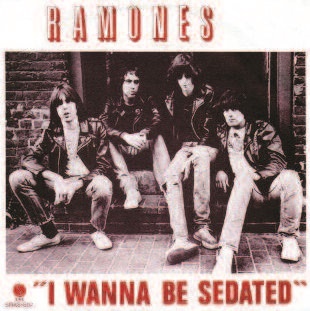 I WANNA BE SEDATED
I WANNA BE SEDATED
THE RAMONES
One of the band’s best-known songs, it was originally released on their fourth album, Road to Ruin, in September 1978. Joey Ramone came up with the idea for the song after he burned himself severely with boiling water and was rushed to a hospital. (He regularly inhaled steam from a kettle before concerts to help clear his nasal passages.) The chorus lyrics Nothing to do, nowhere to go—oh oh were inspired by The Ramones’ tour stop in London, which they discovered completely shut down at Christmas time.
“There’s nothing to do, nowhere to go,” Joey recalled. “Here we were in London for the first time in our lives, and me and Dee Dee were sharing a room in the hotel, and we were watching The Guns of Navarone on TV. I mean, here we are in London finally, and this is what we are doing, watching American movies in the hotel room.”
Johnny Ramone played the same note 65 times in a row in his guitar solo. (How “punk” can you get?). It’s the recording on which Marky Ramone performed as the band’s drummer after replacing Tommy Ramone, who began producing their records. Marky said that it was completed very quickly in the studio, and that his part took only two takes. Ten years after the song was released, Director Bill Fishman made an iconic video for it: one continuous master shot of the Ramones sitting at a kitchen table nonchalantly reading and eating corn flakes while hyperkinetic nuns, acrobats, ballerinas, monsters, cheerleaders, clowns, naughty nurses, and schoolgirls (including a very young Courtney Love) run around them and try to grab their attention.
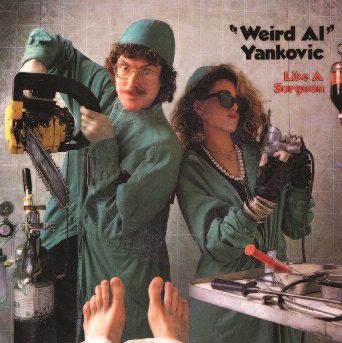 LIKE A SURGEON
LIKE A SURGEON
“WEIRD AL” YANKOVIC
Of all the things that songwriters write about, surgery has to be one of the least popular. After a thorough search through cyberspace, this parody of Madonna’s “Like a Virgin” was literally the only hit song I could find. Recorded in 1985 by Weird Al Yankovic for his third studio album, Dare to Be Stupid, it was written by Yankovic and Madonna herself (who came up with the title), while guitarist Rick Derringer was its executive producer. Prior to this recording Weird Al had never used ideas from other musicians. A mutual acquaintance of both his manager and Madonna’s suggested that they would have good fun collaborating on it. It’s the only known time that he ever worked on one of his parodies directly with the original artist.
“Like a Surgeon” was well received by music critics. Many rated it on par with the original. Eugene Chadbourne congratulated Yankovic for “…perhaps his best ever. Turning the tacky Madonna hit inside out and upside down, he comes up with a hilarious satire of the medical profession.” The music video produced for the tune is set in a hospital, and vamps on elements of the original music video for “Like a Virgin.” In one scene, a Madonna lookalike sits in a corner, filing her nails. It has been a part of Yankovic’s live shows for decades.
 MOTHER’S LITTLE HELPER
MOTHER’S LITTLE HELPER
THE ROLLING STONES
Valium (aka diazepam) is a synthetic analog to the active ingredient found in Valerian root; both increase the amount of a chemical called gamma aminobutyric acid (GABA) in the brain, which helps regulate nerve cells, and has a calming effect on anxiety. “Mother’s Little Helper” is both an ode to this drug…
Mother needs something today to calm her down.
And though she’s not really ill,
There’s a little yellow pill.
She goes running for the shelter
Of a Mother’s Little Helper.
…and a biting commentary on the hypocrisy of American housewives abusing prescription drugs with the benediction of their doctors and the FDA, while the Stones themselves were being labeled dope fiends, simply for taking different drugs without a prescription. Both were seeking refuge from emptiness and despair. Recorded in Los Angeles from December 3 to 8, 1965, in a custom built studio with no windows (the Stones did not want to know if it was day or night), it was the first track on Aftermath, their first album with all original songs.
“It’s about drug dependence, but in a sort of like spoofy way,” Mick Jagger observed.
About his strange-sounding guitar work, Keith Richards said he used a twelve-string with a slide on it: “It’s played slightly Oriental-ish. The track just needed something to make it twang. Otherwise, the song was quite Vaudeville, in a way. I wanted to add some nice bite to it. And it was just one of those things where someone walked in and, ‘Look, it’s an electric twelve-string’. It was some gashed-up job. No name on it. God knows where it came from—or where it went. But I put it together with a bottleneck. Then we had a riff that tied the whole thing together.”
Stones guitarist Brian Jones played the Sitar on the recording. It was one of the first pop songs to use the instrument, just after The Beatles’ “Norwegian Wood.” Drummer Charlie Watts says the band never quite mastered playing it live, although they memorably performed it on The Ed Sullivan Show.
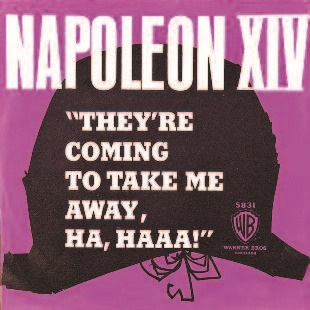 THEY’RE COMING TO TAKE ME AWAY
THEY’RE COMING TO TAKE ME AWAY
(FUNNY FARM)
NAPOLEON XIV
Music critic Dave Marsh called “Funny Farm” the most obnoxious song ever to appear on a jukebox. In 1966, Jerry Samuels (alias Napoleon XIV) was a top recording engineer at New York City’s Associated Recording Studios in Times Square. One night he and Barry Hansen (alias Dr. Demento) were “relaxing” when an old Scottish march called “The Campbells Are Coming” popped into his head.
“I thought, da da dat dat da dat, da da, da da. They’re coming to take me away, ha ha… We were doing work for some advertising agencies, radio spots. They had to come in at exactly 59 seconds, so if it was recorded a little slow or a little fast, we used a device to fix it called a Variable Frequency Oscillator. We only had a 4-track tape recorder at the time. But if you hooked up the VFO to the 4-track, you could do things that weren’t done before. I would be able to raise or lower the pitch of a voice without changing the tempo. By understanding what I could do with that piece of equipment, I wrote this thing.”
Samuels was hesitant to complete the song, which was a sick joke about a serious subject, mental illness. After many months he changed the last verse to say “They’re coming to take me away” because of his dog running away. “By doing that I felt I was lightening the sickness of the joke.”
Adding to the overall silliness, the B-side of the 45 rpm single was simply the A-side run in reverse, and titled “!aaaH-aH ,yawA eM ekaT oT gnimoC er’yehT” (Ha-Haaa! Away, Me Take to Coming They’re). The song was an overnight sensation, peaking at #3 on the Billboard Hot 100, but plummeted to #37 only two weeks later. Fearing outrage from those who thought that it was ridiculing mental illness, radio stations across the country— including New York City’s WABC and WMCA—banned it from their playlists. Airplanes flew protest banners and mobs of angry teenagers picketed WMCA, holding signs saying We’re Coming to Take WMCA Away.
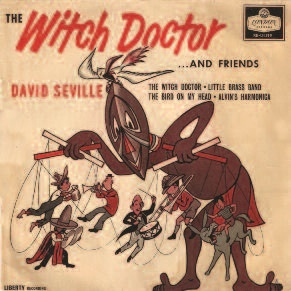 WITCH DOCTOR
WITCH DOCTOR
ROSS BAGDASARIAN
(aka DAVID SEVILLE)
Ross Bagdasarian (David Seville) was a successful songwriter by the time he released “Witch Doctor” as his first single. Seven years earlier, he’d written “Come On-A My House,” one of Rosemary Clooney’s signature hits. The lyrics were based on lines from the novel The Human Comedy, written by his famous cousin, William Saroyan. Bagdasarian was the creator of Alvin and The Chipmunks, a group of three animated rodents with high-pitched human voices. He created the effect by recording his voice with a tape recorder running at half speed, then playing it back at normal speed. “Witch Doctor” was the first song ever to use this technique, and he used the name David Seville for the recording. At that point, he hadn’t yet created The Chipmunks. The song is about a young man seeking advice from a witch doctor on how to woo his girlfriend. The wise witch doctor offers him some magic words that, six decades on, way to many of us still know by heart: Oo ee, oo ah ah, ting tang, walla walla bing bang.
“Witch Doctor” soared to #1 in April 1958 for three weeks. Seville became a pop culture sensation, and performed the song on The Ed Sullivan Show that May. It was also a #1 R&B hit. Many R&B art-toppers of the day were comedic or novelty recordings, including “Get a Job” by The Silhouettes and “Yakety-Yak” by The Coasters. A few months later, using the same technique, Seville created and recorded three distinct voices in close harmony and branded it “The Chipmunks.” In November, he released “The Chipmunk Song (Christmas Don’t Be Late),” which went to #1 for four weeks, won three Grammy Awards, and became a perennial Christmas favorite. The Alvin Show cartoon series followed in 1961—and was resurrected in 1983, and again in 2015.
Album Art: Addicted to Love/Island Records • Comfortably Numb/Columbia Records • Doctor My Eyes/Asylum Records • Dr. Robert/Capitol Records • I Don’t Need No Doctor/A&M Records • I Wanna Be Sedated/Sire Records • Like A Surgeon/Scotti Brothers • Mother’s Little Helper/London Records • Funny Farm/Warner Bros. • Witch Doctor/Liberty Records
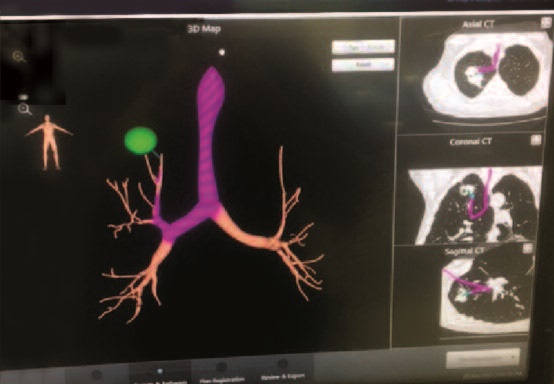 Where lung cancer is concerned, it is all about early detection. The 10-year survival rate for patients diagnosed in Stage 1 or 2 is 88 percent; in Stage 3 and 4, the five-year survival rate is just 17 percent. In his presentation, Dr. Remolina encouraged his fellow doctors to be more proactive when it comes to using the new technology. Medicare actually covers lung screening for “30-pack smokers” ages 55 and over, and Trinitas has a superb Lung Screening Program that employs a low-dose CT scan.
Where lung cancer is concerned, it is all about early detection. The 10-year survival rate for patients diagnosed in Stage 1 or 2 is 88 percent; in Stage 3 and 4, the five-year survival rate is just 17 percent. In his presentation, Dr. Remolina encouraged his fellow doctors to be more proactive when it comes to using the new technology. Medicare actually covers lung screening for “30-pack smokers” ages 55 and over, and Trinitas has a superb Lung Screening Program that employs a low-dose CT scan.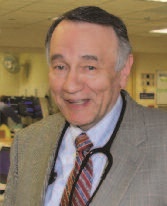 Carlos Remolina, MD, FCCP, PA
Carlos Remolina, MD, FCCP, PA

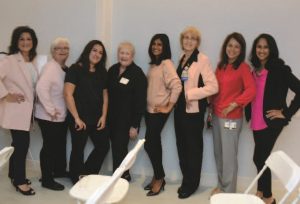
 The year she was diagnosed, it had only been 11 months since her previous mammogram, which meant it would not be covered by insurance. She paid for it and that’s when it was discovered. “Had I waited and we went away for the summer like we usually did, it would have been another four months. My instincts were good
The year she was diagnosed, it had only been 11 months since her previous mammogram, which meant it would not be covered by insurance. She paid for it and that’s when it was discovered. “Had I waited and we went away for the summer like we usually did, it would have been another four months. My instincts were good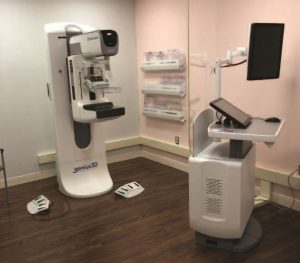 She had a double mastectomy and chemotherapy, and shortly after being released from the hospital, her oldest daughter learned that she had a lump that needed to be removed. It was benign and she has been fine ever since
She had a double mastectomy and chemotherapy, and shortly after being released from the hospital, her oldest daughter learned that she had a lump that needed to be removed. It was benign and she has been fine ever since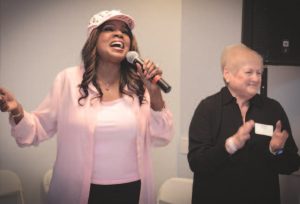 Just in time for Breast Cancer Awareness Month, the $3.4 million Connie Dwyer Breast Center opened at Trinitas on October 1 with a ribbon-cutting ceremony featuring Connie Dwyer, the Trinitas leadership, local officials such as Elizabeth Mayor Christian Bollwage, and a special guest appearance by Grammy award-winning singer Gloria Gaynor (left, with Connie), who sang “I Will Survive
Just in time for Breast Cancer Awareness Month, the $3.4 million Connie Dwyer Breast Center opened at Trinitas on October 1 with a ribbon-cutting ceremony featuring Connie Dwyer, the Trinitas leadership, local officials such as Elizabeth Mayor Christian Bollwage, and a special guest appearance by Grammy award-winning singer Gloria Gaynor (left, with Connie), who sang “I Will Survive The Breast Center, staffed with board-certified bilingual specialists, offers the most up-to-date equipment and services available, such as 3D imaging, which allows radiologists to view the breast tissue in several layers. This breakthrough technology can detect 41 percent more invasive breast
The Breast Center, staffed with board-certified bilingual specialists, offers the most up-to-date equipment and services available, such as 3D imaging, which allows radiologists to view the breast tissue in several layers. This breakthrough technology can detect 41 percent more invasive breast 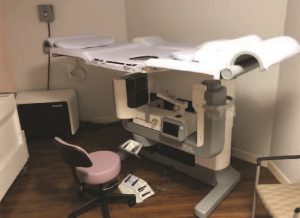
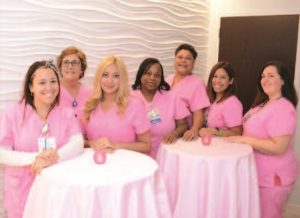
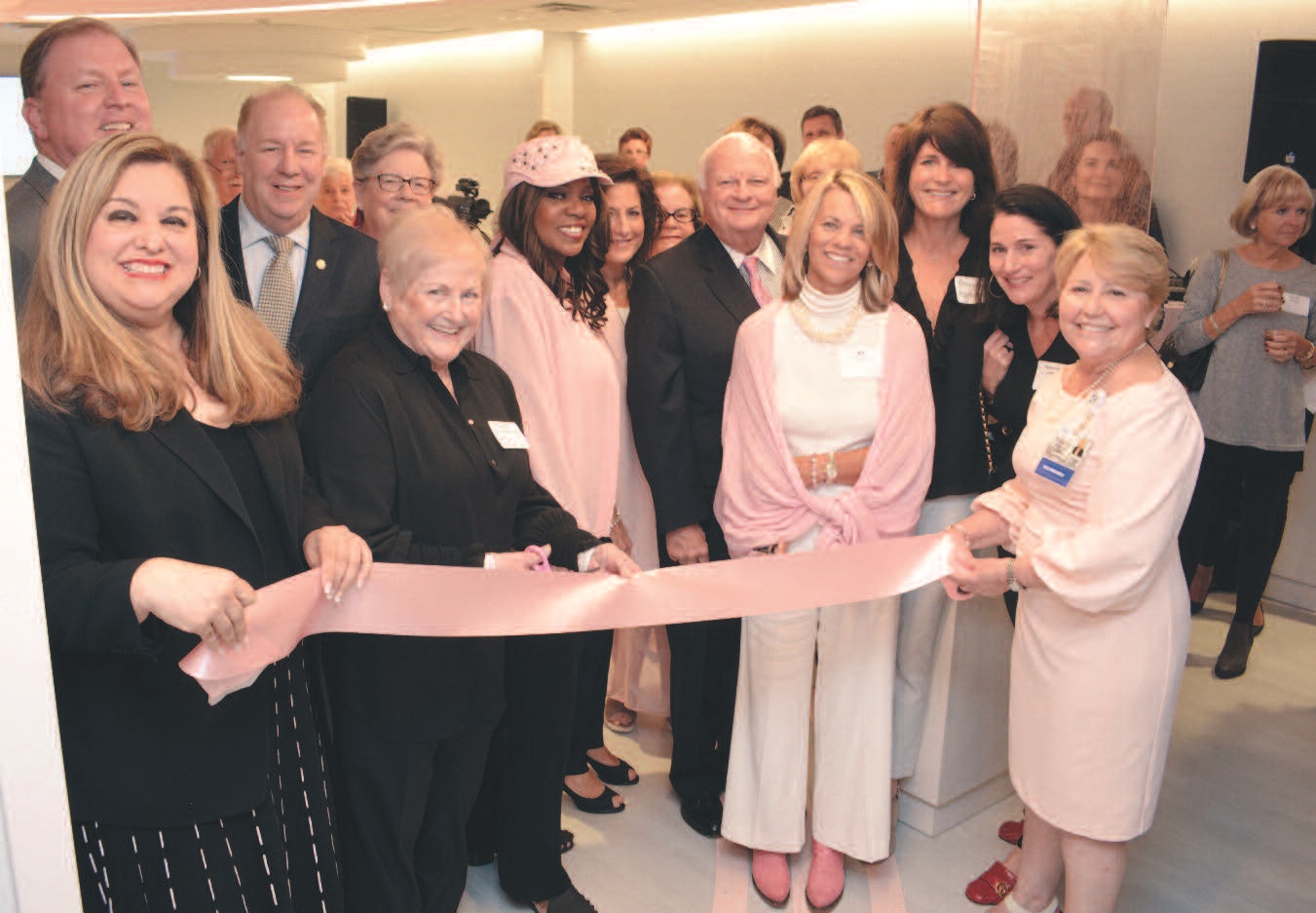
 A traumatic experience with the medical community early on in my life in Amsterdam (where I was born and raised) had motivated me to study a variety of holistic healing modalities after I came to America. When health issues arose that I could not address myself, I had worked successfully with a chiropractor and an acupuncturist, but never a traditional GP. Once, while experiencing severe pain after being clipped by a hit-and-run driver, a colleague convinced me to take an aspirin. It made me so sick that I decided to never touch over-the-counter medication again. Arnica gel for sprained ankles and Old Indian Wild Cherry bark for severe coughs were as far as I would go, no matter how grave the situation. I was a happy, healthy artist and documentary filmmaker living in the States for over 20 years when I began to “lose my mind.”
A traumatic experience with the medical community early on in my life in Amsterdam (where I was born and raised) had motivated me to study a variety of holistic healing modalities after I came to America. When health issues arose that I could not address myself, I had worked successfully with a chiropractor and an acupuncturist, but never a traditional GP. Once, while experiencing severe pain after being clipped by a hit-and-run driver, a colleague convinced me to take an aspirin. It made me so sick that I decided to never touch over-the-counter medication again. Arnica gel for sprained ankles and Old Indian Wild Cherry bark for severe coughs were as far as I would go, no matter how grave the situation. I was a happy, healthy artist and documentary filmmaker living in the States for over 20 years when I began to “lose my mind.”

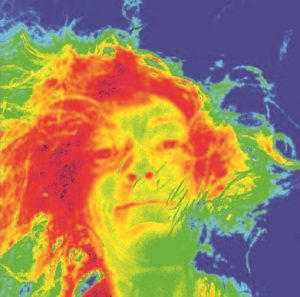

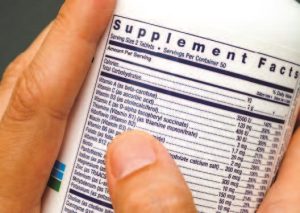
 HUNTER GATHERER
HUNTER GATHERER Editor’s Note: Dree Andrea is an international award-winning filmmaker, artist, and energy coach working in New York and New Jersey. Her B-12 journey has taken her in some fascinating directions and led her to some eye-opening studies on B-12 deficiency. There is research that suggests that her hypersensitivity may have been further amplified by the fact that her mother carried twins, but that her sibling died in the womb. She is currently enrolled in the only training that specializes in coaching highly sensitive people and empaths. Dree is working on her second book, The Empath and the Psychopath, and on the documentary Losing Your Marbles; A B-12 Side Effect. Dree can be found at dreeinthebigcity.com.
Editor’s Note: Dree Andrea is an international award-winning filmmaker, artist, and energy coach working in New York and New Jersey. Her B-12 journey has taken her in some fascinating directions and led her to some eye-opening studies on B-12 deficiency. There is research that suggests that her hypersensitivity may have been further amplified by the fact that her mother carried twins, but that her sibling died in the womb. She is currently enrolled in the only training that specializes in coaching highly sensitive people and empaths. Dree is working on her second book, The Empath and the Psychopath, and on the documentary Losing Your Marbles; A B-12 Side Effect. Dree can be found at dreeinthebigcity.com.
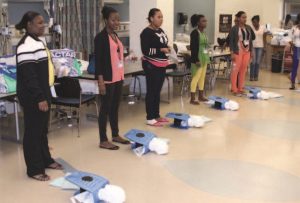 As the program began to take shape, The Haiti Student Nurse Project soon became known as Global Connections in Nursing Education: Haiti and the USA – a name that aptly communicates its essence: assuring that Haitian nurses have access to learning the best practices used in the US that they can then apply in responding to the needs of their fellow Haitians. Since 2014, the program has educated student nurses enrolled at Université de Notre Dame in Jacmel, Haiti, located about 100 miles south of Port au Prince. Its goal: to improve healthcare by strengthening the competence of its nurses. The student nurses have flown to New Jersey to undergo total immersion in US nursing practices and procedures, making the program one of the very few, if not the only one of its kind, to bring students to the United States for their learning experience.
As the program began to take shape, The Haiti Student Nurse Project soon became known as Global Connections in Nursing Education: Haiti and the USA – a name that aptly communicates its essence: assuring that Haitian nurses have access to learning the best practices used in the US that they can then apply in responding to the needs of their fellow Haitians. Since 2014, the program has educated student nurses enrolled at Université de Notre Dame in Jacmel, Haiti, located about 100 miles south of Port au Prince. Its goal: to improve healthcare by strengthening the competence of its nurses. The student nurses have flown to New Jersey to undergo total immersion in US nursing practices and procedures, making the program one of the very few, if not the only one of its kind, to bring students to the United States for their learning experience.

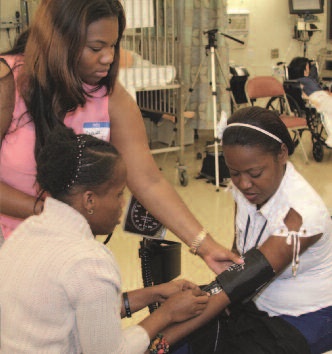 FOCAL POINTS
FOCAL POINTS









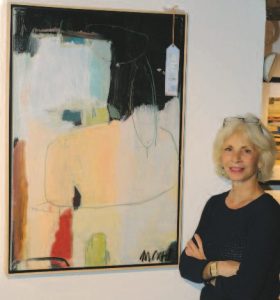 Maureen Chatfield lives and works just outside the Mountainville section of Tewksbury Township. The structure she uses as her studio housed an apple jack still in the 1780s. She teaches painting at the Hunterdon Art Museum and her work is exhibited at the Rosenberg Gallery on East 66th St. in New York and Cacciola Gallery in Bernardsville, as well as galleries in Greenwich, Nantucket, Atlanta, and Vail. To see more of her work, visit maureenchatfield.com.
Maureen Chatfield lives and works just outside the Mountainville section of Tewksbury Township. The structure she uses as her studio housed an apple jack still in the 1780s. She teaches painting at the Hunterdon Art Museum and her work is exhibited at the Rosenberg Gallery on East 66th St. in New York and Cacciola Gallery in Bernardsville, as well as galleries in Greenwich, Nantucket, Atlanta, and Vail. To see more of her work, visit maureenchatfield.com.
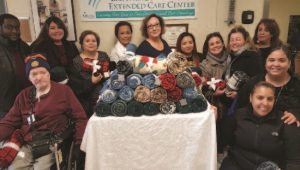
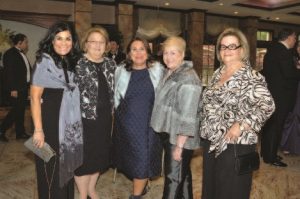

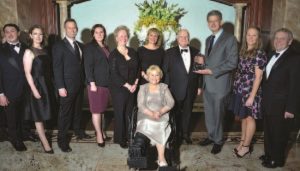

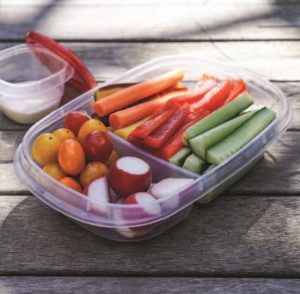 We as parents know that healthy food can be delicious. Fruit and yogurt are smarter breakfast choices than Lucky Charms; salads and whole-grain sandwiches beat Sloppy Joe’s for lunch; and lean grilled meats and vegetables are a vast improvement over high-fat, high-carb, high-sodium dinners like the one the cooks at my old camp titled “turqué alla king.” (I hope at least they used real king, since it was the only part of the dish that was not misspelled.) We can’t always convince our kids to eat right, but it’s encouraging to know that camps now have our backs when it comes to sending the right message.
We as parents know that healthy food can be delicious. Fruit and yogurt are smarter breakfast choices than Lucky Charms; salads and whole-grain sandwiches beat Sloppy Joe’s for lunch; and lean grilled meats and vegetables are a vast improvement over high-fat, high-carb, high-sodium dinners like the one the cooks at my old camp titled “turqué alla king.” (I hope at least they used real king, since it was the only part of the dish that was not misspelled.) We can’t always convince our kids to eat right, but it’s encouraging to know that camps now have our backs when it comes to sending the right message.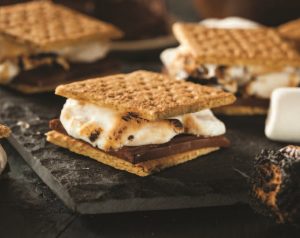 What should campers be consuming? The U.S. Department of Agriculture—the same folks that brought you the much-maligned food pyramid—actually has an answer. The USDA’s MyPlate initiative lays out an ideal, albeit aspirational, set of guidelines for kids to follow. It’s no longer a pyramid. It’s a pie chart and pie is nowhere to be found. It suggests a daily diet of 30 percent grains, 40 percent vegetables, 10 percent fruits, and 20 percent proteins. A smaller circle is dedicated to dairy products, including milk and yogurt. The MyPlate program also preaches portion control. Do summer camps adhere to these guidelines? Some do. The rest are getting there.
What should campers be consuming? The U.S. Department of Agriculture—the same folks that brought you the much-maligned food pyramid—actually has an answer. The USDA’s MyPlate initiative lays out an ideal, albeit aspirational, set of guidelines for kids to follow. It’s no longer a pyramid. It’s a pie chart and pie is nowhere to be found. It suggests a daily diet of 30 percent grains, 40 percent vegetables, 10 percent fruits, and 20 percent proteins. A smaller circle is dedicated to dairy products, including milk and yogurt. The MyPlate program also preaches portion control. Do summer camps adhere to these guidelines? Some do. The rest are getting there. DEALING WITH ALLERGIES
DEALING WITH ALLERGIES PEAK PERFORMANCE
PEAK PERFORMANCE
 ADDICTED TO LOVE
ADDICTED TO LOVE COMFORTABLY NUMB (THE DOCTOR)
COMFORTABLY NUMB (THE DOCTOR) DOCTOR MY EYES
DOCTOR MY EYES DR. ROBERT
DR. ROBERT I DON’T NEED NO DOCTOR
I DON’T NEED NO DOCTOR I WANNA BE SEDATED
I WANNA BE SEDATED LIKE A SURGEON
LIKE A SURGEON MOTHER’S LITTLE HELPER
MOTHER’S LITTLE HELPER THEY’RE COMING TO TAKE ME AWAY
THEY’RE COMING TO TAKE ME AWAY WITCH DOCTOR
WITCH DOCTOR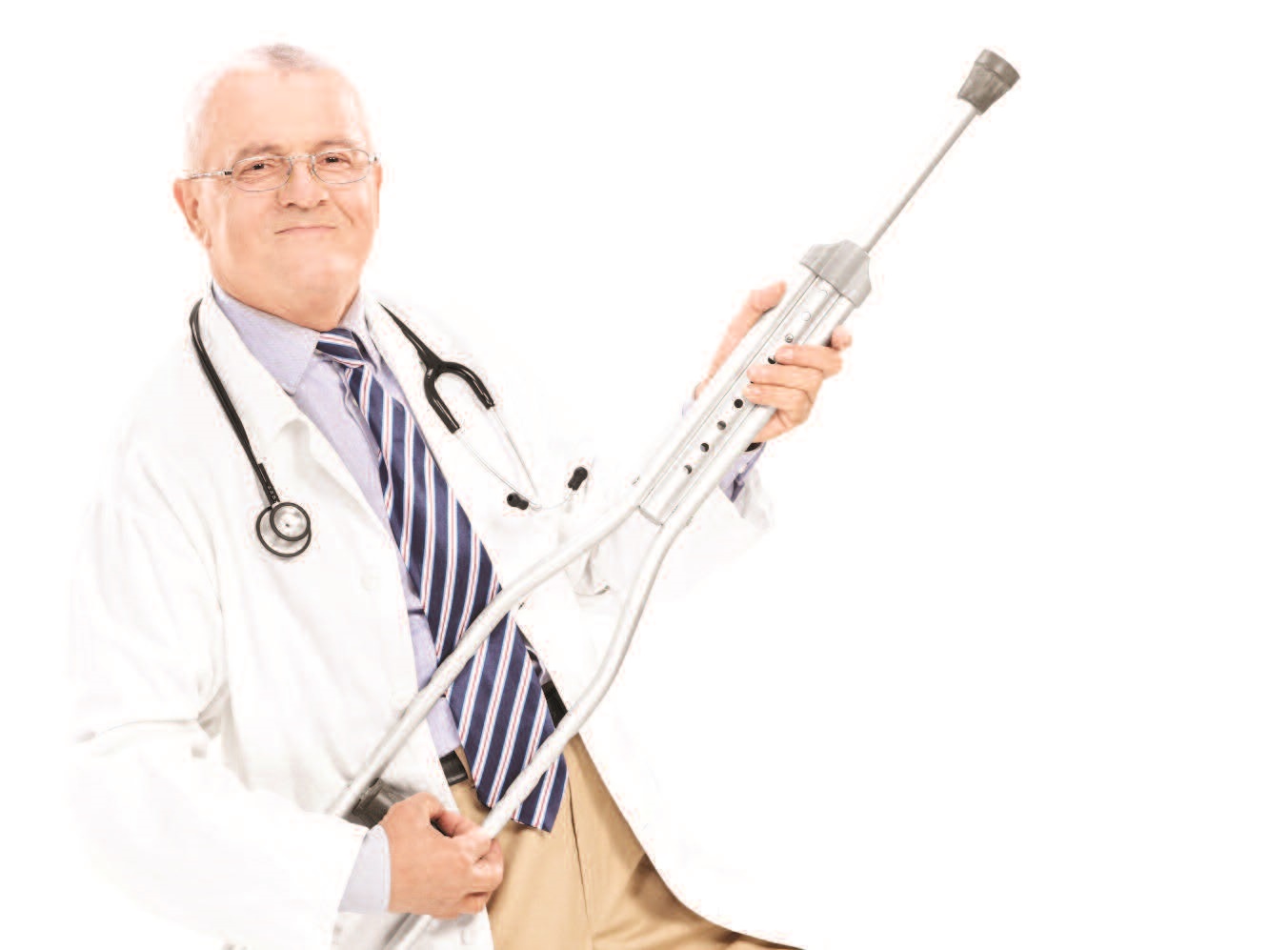
 Paragon Tap & Table • Beef Ramen
Paragon Tap & Table • Beef Ramen Arirang Hibachi Steakhouse • Wasabi Crusted Filet Mignon
Arirang Hibachi Steakhouse • Wasabi Crusted Filet Mignon  Daimatsu • Sushi Pizza
Daimatsu • Sushi Pizza The Barge • Cioppino
The Barge • Cioppino  Luciano’s Ristorante & Lounge • Jumbo Lump Crab Cake Bruschetta
Luciano’s Ristorante & Lounge • Jumbo Lump Crab Cake Bruschetta Morris Tap & Grill • The Monster Burger
Morris Tap & Grill • The Monster Burger LongHorn Steakhouse • Outlaw Ribeye
LongHorn Steakhouse • Outlaw Ribeye Outback Steakhouse • Bone-In Natural Cut Ribeye
Outback Steakhouse • Bone-In Natural Cut Ribeye Arirang Hibachi Steakhouse • Volcano Roll
Arirang Hibachi Steakhouse • Volcano Roll  Galloping Hill Caterers
Galloping Hill Caterers Ursino Steakhouse & Tavern • House Carved 16oz New York Strip Steak
Ursino Steakhouse & Tavern • House Carved 16oz New York Strip Steak  Vine Ripe Markets • Filet Crostini with Horseradish Cream Sauce
Vine Ripe Markets • Filet Crostini with Horseradish Cream Sauce 

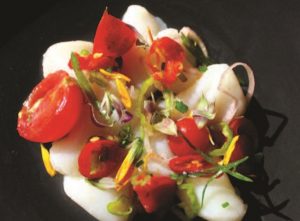
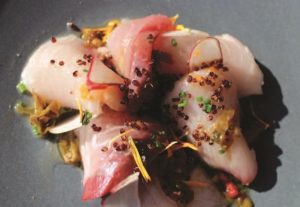





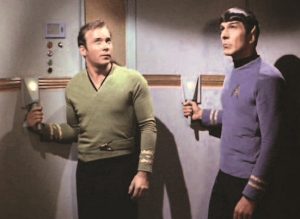

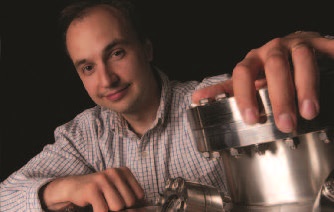
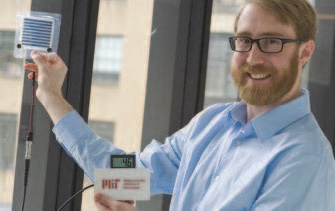



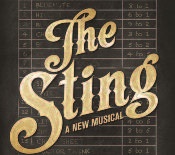


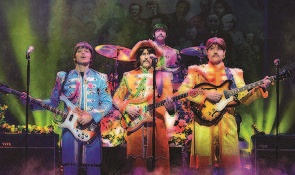 April 15
April 15
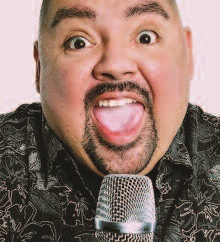 April 21
April 21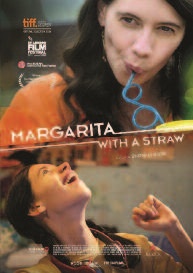


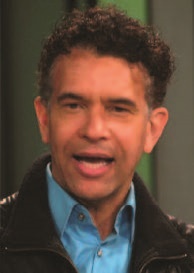
 April 20
April 20 May 12
May 12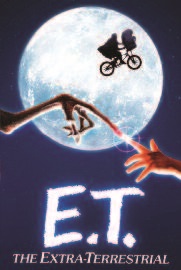
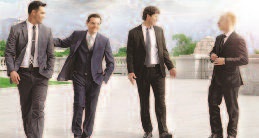


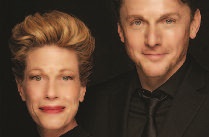
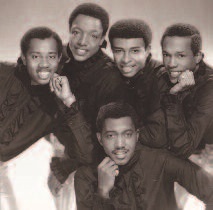
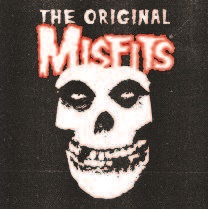 May 18 & 19
May 18 & 19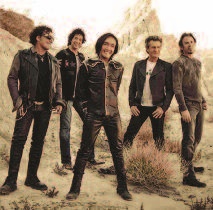
 Cryotherapy is an ergonomic modality used to address a wide range of aches, pains and medical conditions. It also has benefits for athletes looking to improve their performance. The ancient Greeks and Romans used cryotherapy (immersion in chilly seawater) to treat inflamed wounds. In the 19th century, European medicine rediscovered this technique. A couple of generations ago, cryotherapy looked a lot different: a bag of ice wrapped around a knee or shoulder, a chilled whirlpool bath. In the 1970s, Japanese researcher Dr. Toshiba Yamauchi pioneered the concept of whole-body cryotherapy to treat rheumatoid arthritis and, in doing so, began to notice its therapeutic side effects for subjects who suffered from injuries and chronic inflammation. Since then, there has been a huge amount of medical information coming out about this technology and how it can benefit the human body in myriad ways.
Cryotherapy is an ergonomic modality used to address a wide range of aches, pains and medical conditions. It also has benefits for athletes looking to improve their performance. The ancient Greeks and Romans used cryotherapy (immersion in chilly seawater) to treat inflamed wounds. In the 19th century, European medicine rediscovered this technique. A couple of generations ago, cryotherapy looked a lot different: a bag of ice wrapped around a knee or shoulder, a chilled whirlpool bath. In the 1970s, Japanese researcher Dr. Toshiba Yamauchi pioneered the concept of whole-body cryotherapy to treat rheumatoid arthritis and, in doing so, began to notice its therapeutic side effects for subjects who suffered from injuries and chronic inflammation. Since then, there has been a huge amount of medical information coming out about this technology and how it can benefit the human body in myriad ways.
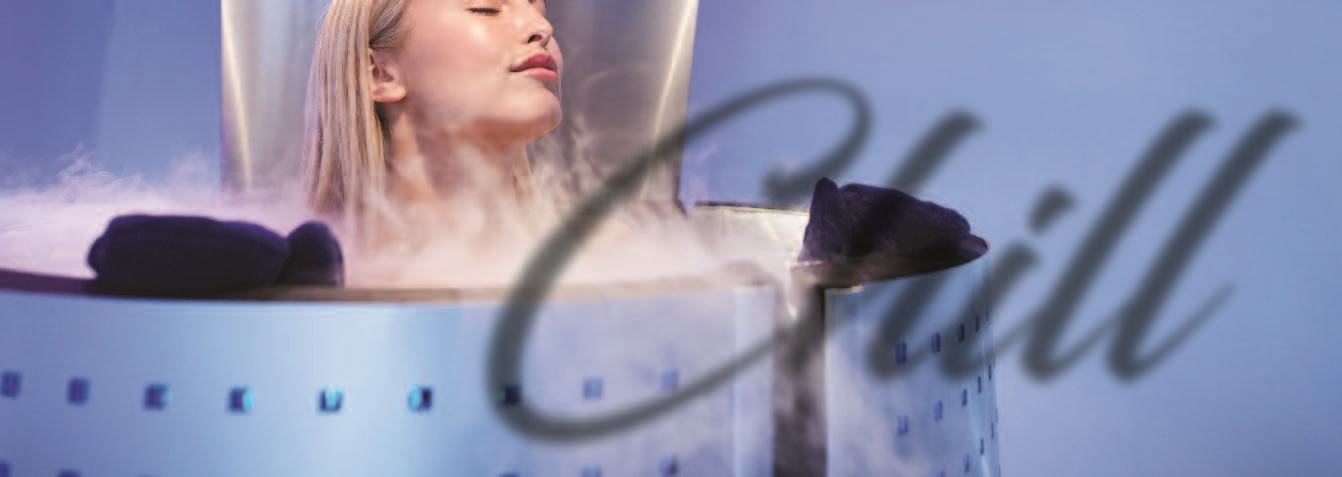
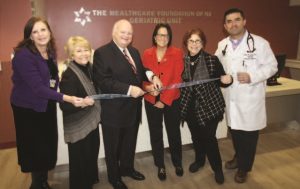
 By definition, the HFNJ’s mission is to improve the health and well-being of vulnerable, underserved populations in greater Newark and the Jewish Community of MetroWest NJ, to elevate the quality of community healthcare, reduce disparities in access, and promote the infusion of compassion and humanism into our healthcare system. Dr. Beth Levithan, chair of the HFNJ, who joined the board in 1997, is most proud of the HFNJ’s commitment to humanism.
By definition, the HFNJ’s mission is to improve the health and well-being of vulnerable, underserved populations in greater Newark and the Jewish Community of MetroWest NJ, to elevate the quality of community healthcare, reduce disparities in access, and promote the infusion of compassion and humanism into our healthcare system. Dr. Beth Levithan, chair of the HFNJ, who joined the board in 1997, is most proud of the HFNJ’s commitment to humanism.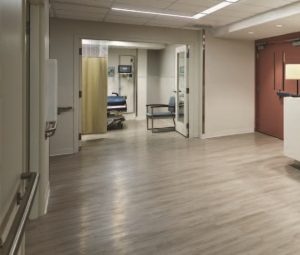
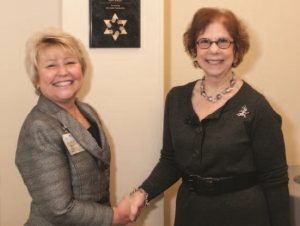


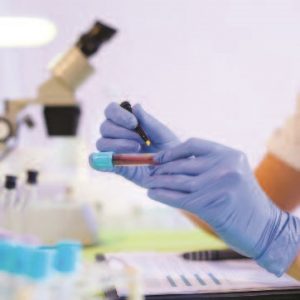

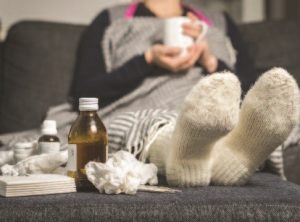



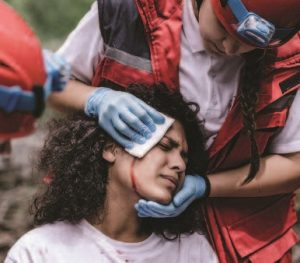
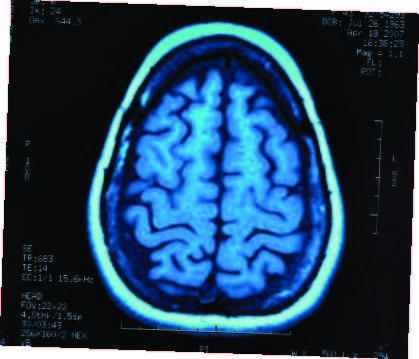
 Poets have been writing odes to mothers for a thousand years. Baby books have been offering advice to moms for a century. Alas, no words convey the true essence of motherhood quite like the intimate moments captured through the lens of celebrated lifestyle photographer Sue Barr. Her work offers an honest and engaging window into what it looks like to be a modern New Jersey mom.
Poets have been writing odes to mothers for a thousand years. Baby books have been offering advice to moms for a century. Alas, no words convey the true essence of motherhood quite like the intimate moments captured through the lens of celebrated lifestyle photographer Sue Barr. Her work offers an honest and engaging window into what it looks like to be a modern New Jersey mom.

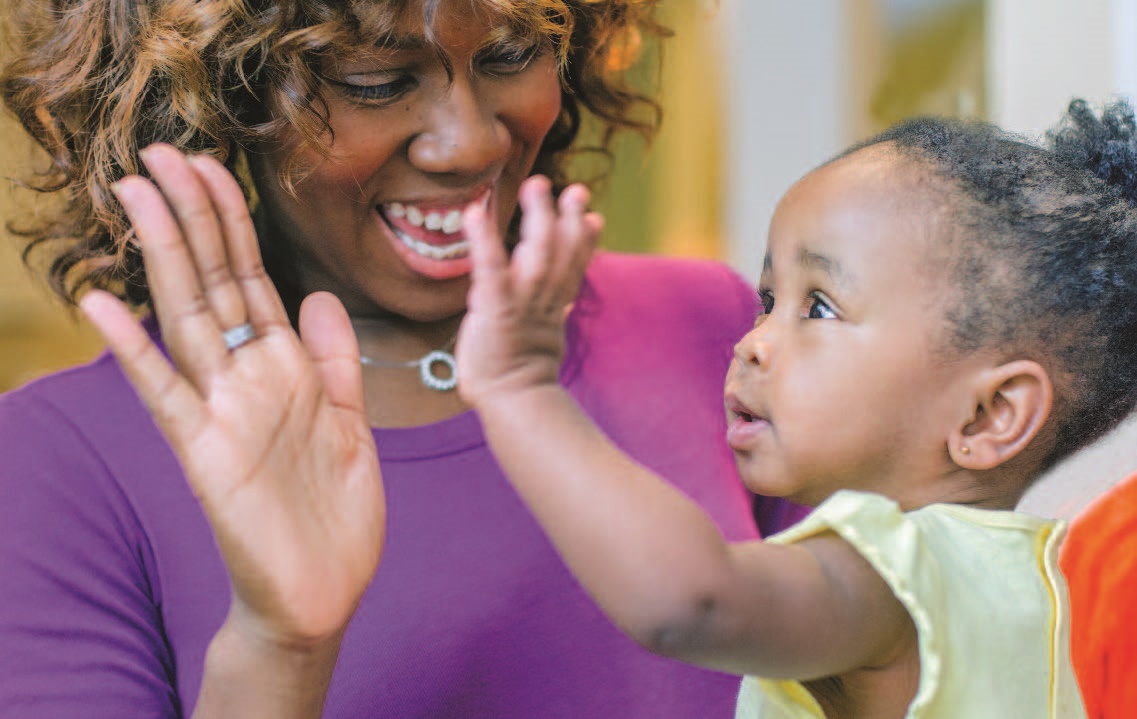


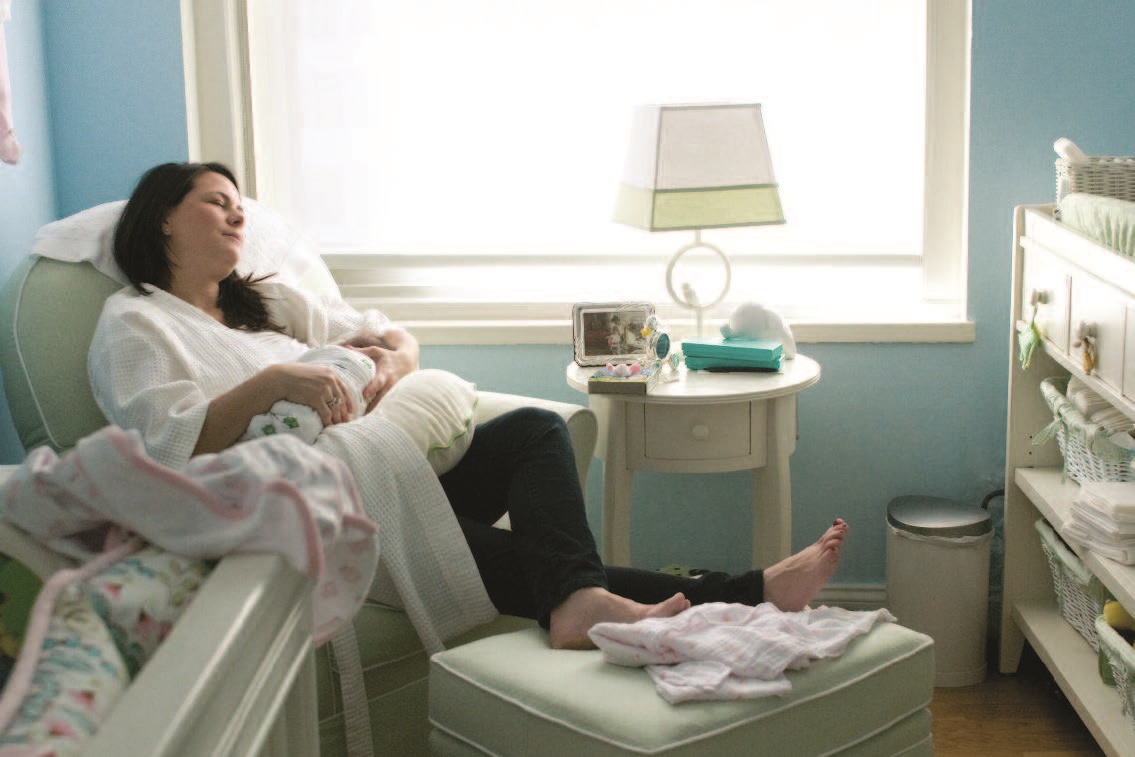


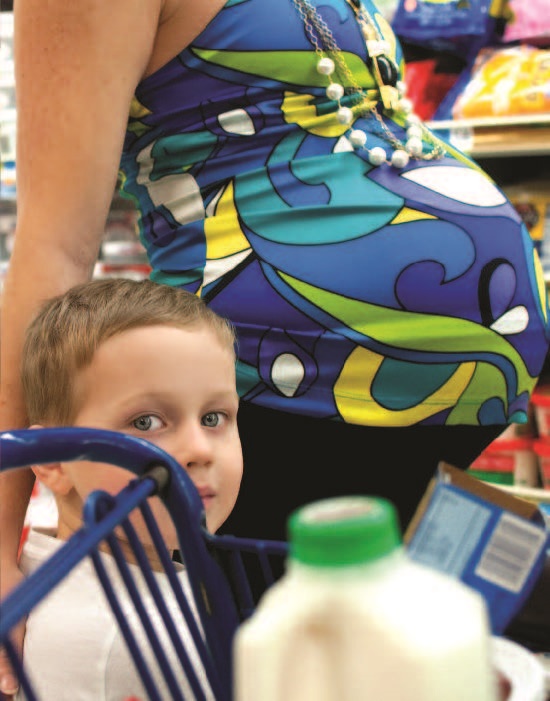

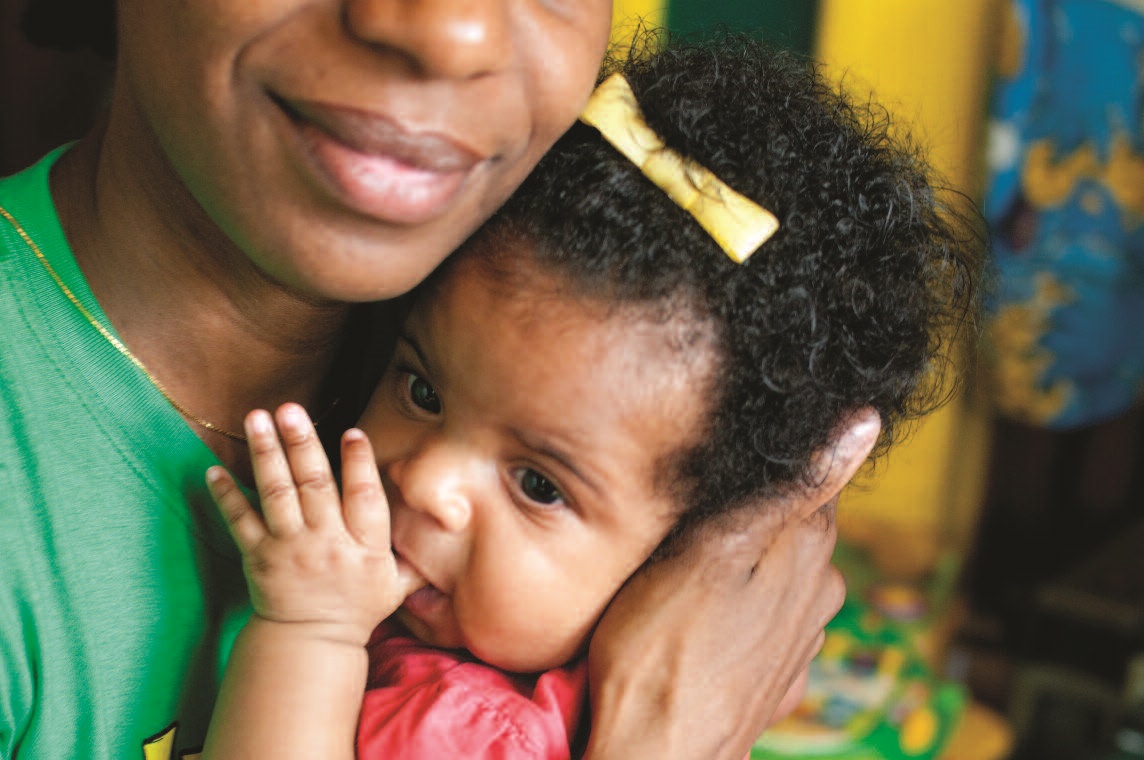


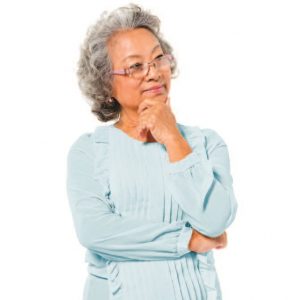


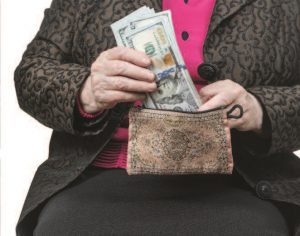


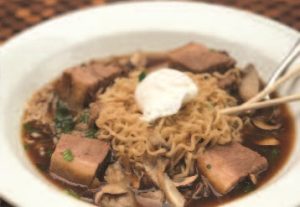 Paragon Tap & Table • Beef Ramen
Paragon Tap & Table • Beef Ramen Arirang Hibachi Steakhouse • Wasabi Crusted Filet Mignon
Arirang Hibachi Steakhouse • Wasabi Crusted Filet Mignon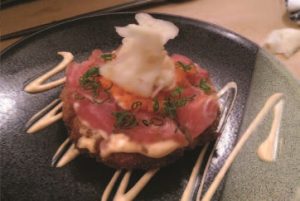 Daimatsu • Sushi Pizza
Daimatsu • Sushi Pizza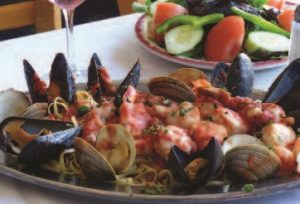 The Barge • Cioppino
The Barge • Cioppino Luciano’s Ristorante & Lounge • Pan Seared Scallops
Luciano’s Ristorante & Lounge • Pan Seared Scallops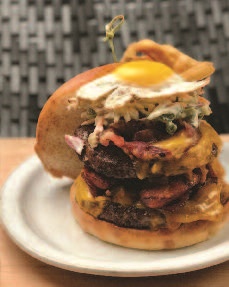 Morris Tap & Grill • The Monster Burger
Morris Tap & Grill • The Monster Burger Garden Grille • Roasted Garlic & Herb Rubbed Grilled Sirloin
Garden Grille • Roasted Garlic & Herb Rubbed Grilled Sirloin LongHorn Steakhouse • Outlaw Ribeye
LongHorn Steakhouse • Outlaw Ribeye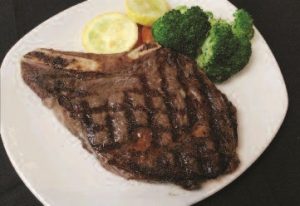 Outback Steakhouse • Bone-In Natural Cut Ribeye
Outback Steakhouse • Bone-In Natural Cut Ribeye Arirang Hibachi Steakhouse • Volcano Roll
Arirang Hibachi Steakhouse • Volcano Roll Ursino Steakhouse & Tavern • House Carved 16oz New York Strip Steak
Ursino Steakhouse & Tavern • House Carved 16oz New York Strip Steak Vine Ripe Markets • Filet Crostini with Horseradish Cream Sauce
Vine Ripe Markets • Filet Crostini with Horseradish Cream Sauce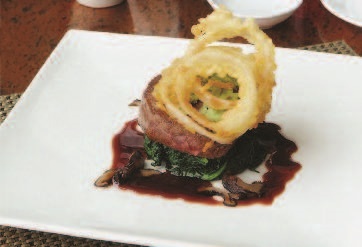


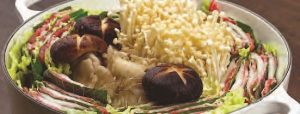





 Making my way from a coffee shop to the Ho Chi Minh Mausoleum is as jarring as it gets for an American war veteran. Not too far away is a monument to John McCain’s seizure at Truch Bac Lake (left), commemorating where he parachuted after being shot down in 1967. Equally disconcerting was passing through the doors of Hoa Lo Prison (aka the Hanoi Hilton), where captured soldiers and airmen were subjected to deprivation and torture. American POWs had more prescient gallows humor than they knew. The twenty-five-story Hanoi Towers overshadows the infamous prison these days. The day I visited Hanoi’s university, the Temple of Literature, built in 1076, I watched proud parents taking pictures of recent grads with their diplomas. They were happy to pose with me, too.
Making my way from a coffee shop to the Ho Chi Minh Mausoleum is as jarring as it gets for an American war veteran. Not too far away is a monument to John McCain’s seizure at Truch Bac Lake (left), commemorating where he parachuted after being shot down in 1967. Equally disconcerting was passing through the doors of Hoa Lo Prison (aka the Hanoi Hilton), where captured soldiers and airmen were subjected to deprivation and torture. American POWs had more prescient gallows humor than they knew. The twenty-five-story Hanoi Towers overshadows the infamous prison these days. The day I visited Hanoi’s university, the Temple of Literature, built in 1076, I watched proud parents taking pictures of recent grads with their diplomas. They were happy to pose with me, too. Hanoi was only one stop on my three-week odyssey. In South Vietnam, my friends and I idled a few days in the seaside resort of Vung Tau, called Cap Saint-Jacques by the French. Gorgeous mountain lookouts and theme parks feature huge statues: the Buddha atop one and Jesus another. Our B&B was opposite a wonderful seafood restaurant, where we dined among what looked like members of Vietnamese high society celebrating Christmas. In Ho Chi Minh City (formerly Saigon), Christmas carols blasted day and night from commercial malls and government offices everywhere in the Communist metropolis. Gift-wrapped packages were stacked in store windows, hotel clerks wore red Santa Claus hats, and Christmas trees were decorated with bright lights and outsized ornaments. The incongruity of it all suggested we may have lost the military conflict, but we won the cultural war. The Vietnamese may have to decide one day if that’s a good thing
Hanoi was only one stop on my three-week odyssey. In South Vietnam, my friends and I idled a few days in the seaside resort of Vung Tau, called Cap Saint-Jacques by the French. Gorgeous mountain lookouts and theme parks feature huge statues: the Buddha atop one and Jesus another. Our B&B was opposite a wonderful seafood restaurant, where we dined among what looked like members of Vietnamese high society celebrating Christmas. In Ho Chi Minh City (formerly Saigon), Christmas carols blasted day and night from commercial malls and government offices everywhere in the Communist metropolis. Gift-wrapped packages were stacked in store windows, hotel clerks wore red Santa Claus hats, and Christmas trees were decorated with bright lights and outsized ornaments. The incongruity of it all suggested we may have lost the military conflict, but we won the cultural war. The Vietnamese may have to decide one day if that’s a good thing In 1969, as a young Army lieutenant, I flew along the Cambodian border in a Birddog observation plane, spending my days looking for North Vietnamese troops. The bomb-cratered landscape I surveilled resembled the moon Neil Armstrong stepped onto that same year. Occasionally, what sounded like the intermittent buzzing of mosquitos around our plane drew my attention to muzzle flashes from shooters a thousand feet below. As quickly as they appeared, they skedaddled into their hidey-holes on the side of the border we weren’t supposed to cross. Being a target of small arms fire will instantly snap you out of revaries contemplating the natural scenic beauty of Vietnam. And out of the remorse for what a large country can do to destroy a small one.
In 1969, as a young Army lieutenant, I flew along the Cambodian border in a Birddog observation plane, spending my days looking for North Vietnamese troops. The bomb-cratered landscape I surveilled resembled the moon Neil Armstrong stepped onto that same year. Occasionally, what sounded like the intermittent buzzing of mosquitos around our plane drew my attention to muzzle flashes from shooters a thousand feet below. As quickly as they appeared, they skedaddled into their hidey-holes on the side of the border we weren’t supposed to cross. Being a target of small arms fire will instantly snap you out of revaries contemplating the natural scenic beauty of Vietnam. And out of the remorse for what a large country can do to destroy a small one.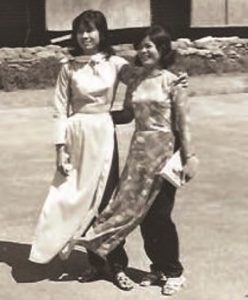 Nga motioned for me to sit. She kept leaving the small kitchen area to compose herself and catch her breath. She said something about me being like a detective to find her, still in shock until she finally settled beside me. I’d brought along some old pictures. Our great friend Hung, her best friend Lan (above left), and my fellow lieutenants: Fly, Sam, and Jim. We lingered over the images of parties at her house. Ba Muoi Ba beer bottles littered tables filled with spring rolls, pho, and other delicacies—my first introductions to what is now world-famous cuisine. What news of Lan? I was distressed to learn she was “sick now,” living with her family just a few houses down the street. Of course, I wanted to visit her.
Nga motioned for me to sit. She kept leaving the small kitchen area to compose herself and catch her breath. She said something about me being like a detective to find her, still in shock until she finally settled beside me. I’d brought along some old pictures. Our great friend Hung, her best friend Lan (above left), and my fellow lieutenants: Fly, Sam, and Jim. We lingered over the images of parties at her house. Ba Muoi Ba beer bottles littered tables filled with spring rolls, pho, and other delicacies—my first introductions to what is now world-famous cuisine. What news of Lan? I was distressed to learn she was “sick now,” living with her family just a few houses down the street. Of course, I wanted to visit her.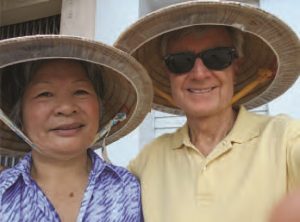 Nga and I held time at bay for several hours, though not quite turning back the clock. Familiarity returned; romance less so. I realize now that a lonely soldier confused warm companionship and a dollop of guilt with true love. I won’t diminish what Nga and I had during the war. Had I brought her home to America, there’s an even chance we might have grown to love each other enough for a marriage to prosper and thrive. And just as likely she might have become homesick and discontented with a fast-paced and rapidly changing society so different from her traditional life in Vietnam. The exigencies of fate won’t allow a resolve to these hypotheticals.
Nga and I held time at bay for several hours, though not quite turning back the clock. Familiarity returned; romance less so. I realize now that a lonely soldier confused warm companionship and a dollop of guilt with true love. I won’t diminish what Nga and I had during the war. Had I brought her home to America, there’s an even chance we might have grown to love each other enough for a marriage to prosper and thrive. And just as likely she might have become homesick and discontented with a fast-paced and rapidly changing society so different from her traditional life in Vietnam. The exigencies of fate won’t allow a resolve to these hypotheticals.